The holly and the ivy
Ilex decidua is a native Texas holly known as possumhaw. Where many hollies have prickly leaves and are evergreen, this one has soft leaves that it sheds by the end of the year, as the species name decidua indicates. The falling off of the leaves makes it easier to see the tree’s bright red little fruits, of which there can be multitudes. The photograph above from Bell Mountain Blvd. on December 1st shows a stage at which the leaves had paled and were gradually falling off. Three weeks later we got curious about how this already colorful little group of possumhaws was coming along, so we went back. The second picture shows almost no leaves left, nor had birds or anything else reduced the dense red splendor.
As for the ivy in this post’s title, let me back up to November 15th and add an item to the bright autumn leaves series you’ve been seeing on and off here for weeks: it’s Toxicodendron radicans. You might say that when it comes to colorful small-scale fall foliage, nothing can touch poison ivy.
© 2020 Steven Schwartzman



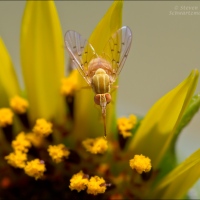
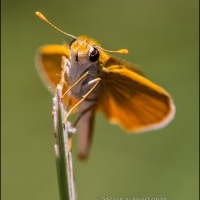
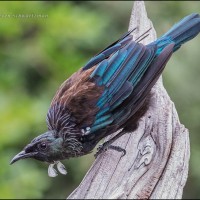
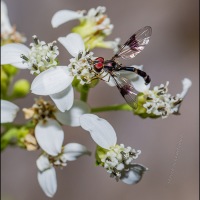
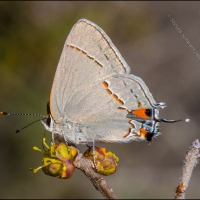
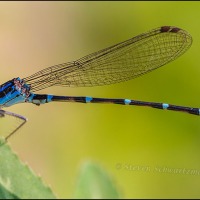

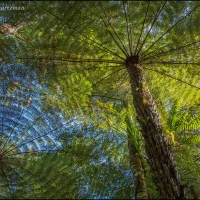
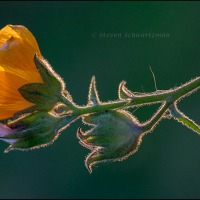
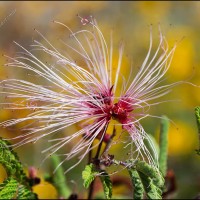
Merry Christmas, Steve. Ariana and Michael wish you and the Lady Eve a wonderful holiday season. Thank you for another year of beauty, craftsmanship, art, and wit ! Micha.
rolfingaustintx
December 25, 2020 at 5:19 AM
Thanks for your friendsome words. There’ll be a lot of catching up to do in 2021.
Steve Schwartzman
December 25, 2020 at 6:51 AM
Hoho I wasn’t expecting poison ivy! But it’s undeniably attractive when it turns color, and so are those scads of red berries.
Robert Parker
December 25, 2020 at 6:20 AM
Yo ho ho and a bottle of rum,
Poison ivy’s not so dumb.
Though scaring off gals and fellows,
It knows how to turn reds and yellows.
A possumhaw tree’s many berries
Can’t help but make all of us merries.
Steve Schwartzman
December 25, 2020 at 7:00 AM
Haha! That’s great!
Robert Parker
December 25, 2020 at 7:11 AM
Aw, that seems to call for a turning of possumhaw into possumhahawhaw or possumhaha.
Steve Schwartzman
December 25, 2020 at 7:25 AM
The red fruits are brilliant and almost as enjoyable to us as the berries are to whichever birds dine on them.
So often noxious plants yield guilty pleasure such as your poison ivy leaf.
Steve Gingold
December 25, 2020 at 8:12 AM
I’ve seen cedar waxwings gorge on possumhaw fruit:
https://portraitsofwildflowers.wordpress.com/2015/02/15/cedar-waxwings-and-possumhaws/
Poison ivy’s colors don’t make me feel guilty, nor does the fact that I’ve never suffered its effects, even though on several occasions I’ve accidentally brushed against one lightly. The most colorful poison ivy I ever found was in 2006:
https://portraitsofwildflowers.wordpress.com/2017/12/18/speaking-of-poison-ivy/
Steve Schwartzman
December 25, 2020 at 8:23 AM
A guilty pleasure is different than the guilt of tearing these out of the ground which we do rather than Roundup them.
I somehow missed that post but just atoned for it.
Steve Gingold
December 25, 2020 at 9:55 AM
Now you are at one—which is what atone literally means. After we moved to our current house in 2004, I found a few poison ivy plants in a corner of the back yard. I felt no guilt about spraying them with an insecticide (I don’t recall which one). No poison ivy has ever come back to our yard, though it’s a common native plant here and animals might still deposit seeds.
Steve Schwartzman
December 25, 2020 at 12:08 PM
Insecticide? I didn’t know that works on plants.
Steve Gingold
December 25, 2020 at 12:12 PM
Oops: a thinko. Herbicide.
Steve Schwartzman
December 25, 2020 at 12:15 PM
That’s what I thought but refrained from correcting. I have thinkos by the hour.
Steve Gingold
December 25, 2020 at 12:20 PM
I independently invented thinko as a useful word when I taught math here from 2002 to 2006. Now it’s crept into a few dictionaries, one of which says it goes back to the 1990s, so I wasn’t the first. “Thinkos by the hour” sounds like it could be a song title, along the lines of “Heartaches by the number, troubles by the score.” Now all you need to do is fill out the lyrics and write the music.
Steve Schwartzman
December 25, 2020 at 12:29 PM
That’s not my forte. Maybe Gary (Krikitarts) will see this and write something.
Steve Gingold
December 25, 2020 at 12:35 PM
Composing music’s not something I could do, either. Gary could indeed.
Steve Schwartzman
December 25, 2020 at 12:49 PM
What glorious trees! I’m going to be a little more forgiving of our possumhaws after my recent foray into your territory. It seems that hill country conditions favor this kind of gloriosity more than those here at the coast. I especially like the way the fingers of cloud mimic the fingers of berry-laden branches in the first photo.
I’ve never seen poison ivy with such color. If only it were so bright year round; it might make it easier for me to avoid the plant and its ‘gifts.’ I’ll certainly look for it the next time I’m out and about.
shoreacres
December 25, 2020 at 8:56 AM
A few days ago we drove TX 29 between Liberty Hill and Burnet, which I once dubbed the Possumhaw Trail for the many trees of that species along the way. None this year proved as good, or anywhere close to it, as the ones in this post, with their extra advantage of being less than five miles from home. Let’s hope you find that degree of gloriosity in some possumhaws on future trips into “the interior.”
For a couple of decades I’ve known that poison ivy turns colors in the fall, and I’ve often enough taken pictures of that stage. You may have followed the link in my reply to Steve G., which includes a 2006 picture showing the best multicolored poison ivy I ever came across. The one I found this November 15th was unusual for the uniformity of its bright yellow. It reminds me of the sumpweed leaf you saw here three weeks ago:
https://portraitsofwildflowers.wordpress.com/2020/12/03/a-new-source-of-fall-color-for-me/
Steve Schwartzman
December 25, 2020 at 9:18 AM
That holly really does take on an entirely different character when the leaves fall, showing all those bright red berries. Nice! I hope you have a Merry Christmas and enjoy the holidays!
Todd Henson
December 25, 2020 at 9:33 AM
There’s a closely related Texas species, the yaupon, that retains its leaves and therefore doesn’t offer as good a view of the red fruits. Birds and squirrels nonetheless eat them:
https://portraitsofwildflowers.wordpress.com/2019/03/02/two-kinds-of-little-red-things/
https://portraitsofwildflowers.wordpress.com/2018/01/27/the-squirrels-are-at-it-again/
Steve Schwartzman
December 25, 2020 at 11:31 AM
Ha! Good one. Does your poison ivy also turn red? Ours does, and between that and Virginia Creeper they turn tree trunks into scarlet and orange-red columns that are a real wonder to see. Doesn’t happen every year, though.
As for the holly, that is really something. I was just reading about this species as one I could plant here although it might be stretching the point a little as to native. It serves as a host plant for several lepitdoptera and is also a good pollinator plant in the spring.
melissabluefineart
December 25, 2020 at 10:08 AM
It took me a while to hit upon my last sentence. I’m glad you got it.
Yes, poison ivy vines here sometimes turn red:
https://portraitsofwildflowers.wordpress.com/2013/12/20/pretty-poison-differently-grown-and-differently-hued/
And you’ll probably remember this Virginia creeper doing the same:
https://portraitsofwildflowers.wordpress.com/2017/12/16/virginia-creeper-creeping-colorfully-upward/
I see from the USDA range map that possumhaw grows naturally in southern and west-central Illinois, so you might succeed with cultivated specimens a little further north.
Steve Schwartzman
December 25, 2020 at 11:54 AM
Yes exactly. The forest preserve has chosen one of our preserves to begin experimenting with bringing seed from farther south, so the assisted northward migration begins! They are concentrating on the same species, just more southern gene pools, but I’m interested in more southern species as well. As birds and insects find their way north, it would be great if they found the plants they are used to waiting for them.
melissabluefineart
December 29, 2020 at 10:31 AM
Now that raises an interesting question: you already have the closely related winterberry, Ilex verticillata, native in your area, so why try to bring possumhaw further north?
Steve Schwartzman
December 29, 2020 at 10:42 AM
Ilex verticillata seems to be happiest growing in the bog, in about 3″ of slightly acidic water. When I had water stay in my rain garden for most of a year I was thinking about trying it but my neighbor did that de-watering project and my garden is dry now. I think the possum haw would find it easier to grow here.
Species of plants and animals are already attempting to move north and up to escape from rising temperatures. Wherever possible land managers are creating green corridors to allow them to do that, but in most areas that will be insufficient to do the job so it behooves us to help the process along. By establishing populations further north it can serve as a refugee for a species which may well die out in its traditional range.
A very good book on the subject is “Trees in Trouble” by Daniel Matthews.
melissabluefineart
December 30, 2020 at 9:15 AM
Thanks for your detailed answer.
Steve Schwartzman
December 30, 2020 at 9:32 AM
A bit wordy? Also, I just finished David Attenborough’s latest book and I can highly recommend it as well. It is very lucid and readable.
melissabluefineart
December 31, 2020 at 9:25 AM
When it comes to words, I’m all for details. I take it the latest book is A Life on Our Planet, which is also the title of a film by Attenborough that’s available on Netflix (which I don’t subscribe to). I’ve seen and enjoyed many of his earlier nature documentaries.
Steve Schwartzman
December 31, 2020 at 9:34 AM
Yes. He does a good job of laying out the development of some of the crises we are in, but finishes with a great deal of optimism.
melissabluefineart
December 31, 2020 at 9:38 AM
We have poison ivy and poison oak here, both turn beautiful colors in the fall. The possumhaw fruits make a colorful composition!
Lavinia Ross
December 25, 2020 at 10:51 AM
At least these plants that are so harmful to people compensate a little by offering up beautiful colors in the fall. Possumhaw, fortunately, is innocuous, so there’s no need to be careful, and for years I’ve enjoyed photographing the ones with most luxuriant crops of fruit.
Steve Schwartzman
December 25, 2020 at 12:18 PM
Christmas Texas style! Hope you didn’t touch that last lovely leaf – they write songs about that plant, you know.
composerinthegarden
December 25, 2020 at 3:34 PM
I’m pretty attentive to poison ivy, which is quite common in my hilly part of Austin, so I certainly wasn’t about to touch that yellow leaf, no matter how pretty. Once in a rare while I’ve accidentally brushed lightly against a poison ivy leaf, and fortunately nothing has ever come of it. Maybe I’m in the small minority of people who aren’t susceptible to urushiol—but maybe not, so I never push my luck.
Steve Schwartzman
December 25, 2020 at 3:43 PM
Up here in the northeast, the common deciduous ivy is winterberry, same glorious red berries, but not so treelike, more of a shrub. The.yellow of the poison ivy is beautiful- I’m more accustomed to seeing red leaves.
tomwhelan
December 27, 2020 at 10:49 PM
I’ve heard of your similar winterberry, which is Ilex verticillata. The poison ivy here turns both red and yellow:
https://portraitsofwildflowers.wordpress.com/2013/12/20/pretty-poison-differently-grown-and-differently-hued/
https://portraitsofwildflowers.wordpress.com/2013/12/19/pretty-poison/
Steve Schwartzman
December 28, 2020 at 7:06 AM
Love your comments on the hated, underrated poison ivy!
mattbuckinghamphotography
December 30, 2020 at 9:21 AM
Underrated indeed, though I understand people’s hatred, given the misery the plant causes each year. I don’t know of another species that’s so protean, growing as a forb, a woody stalk, and a high-climbing vine.
Steve Schwartzman
December 30, 2020 at 9:36 AM
[…] may remember the gorgeously fruitful possumhaws (Ilex decidua) that appeared in these pages three weeks ago. After I posted the second of those pictures to Facebook’s Texas Flora group […]
Yummy yaupon | Portraits of Wildflowers
January 9, 2021 at 4:33 AM
[…] seen this season haven’t produced a lot of fruit. A few weeks ago I made sure to check out several that looked fabulous last year; this time they were almost completely bare. Among the best specimens I’ve found was the one […]
PQ | Portraits of Wildflowers
February 13, 2022 at 4:25 AM
It would have been interesting to return in the spring to see if all the berries had been eaten by then.
tanjabrittonwriter
February 13, 2022 at 6:48 PM
They did eventually disappear, but I don’t know specifically when, nor whether they fell off naturally or got devoured by cedar waxwings or robins or other birds.
Steve Schwartzman
February 13, 2022 at 6:53 PM
Let’s hope they filled many robins’ and waxwings’ tummies.
tanjabrittonwriter
February 13, 2022 at 7:57 PM
I mentioned both of those kinds of birds because I’ve seen them at work here.
Steve Schwartzman
February 13, 2022 at 8:35 PM
They are among the most conspicuous berry connoisseurs!
tanjabrittonwriter
February 13, 2022 at 8:47 PM
Berry much so.
Steve Schwartzman
February 14, 2022 at 5:41 AM